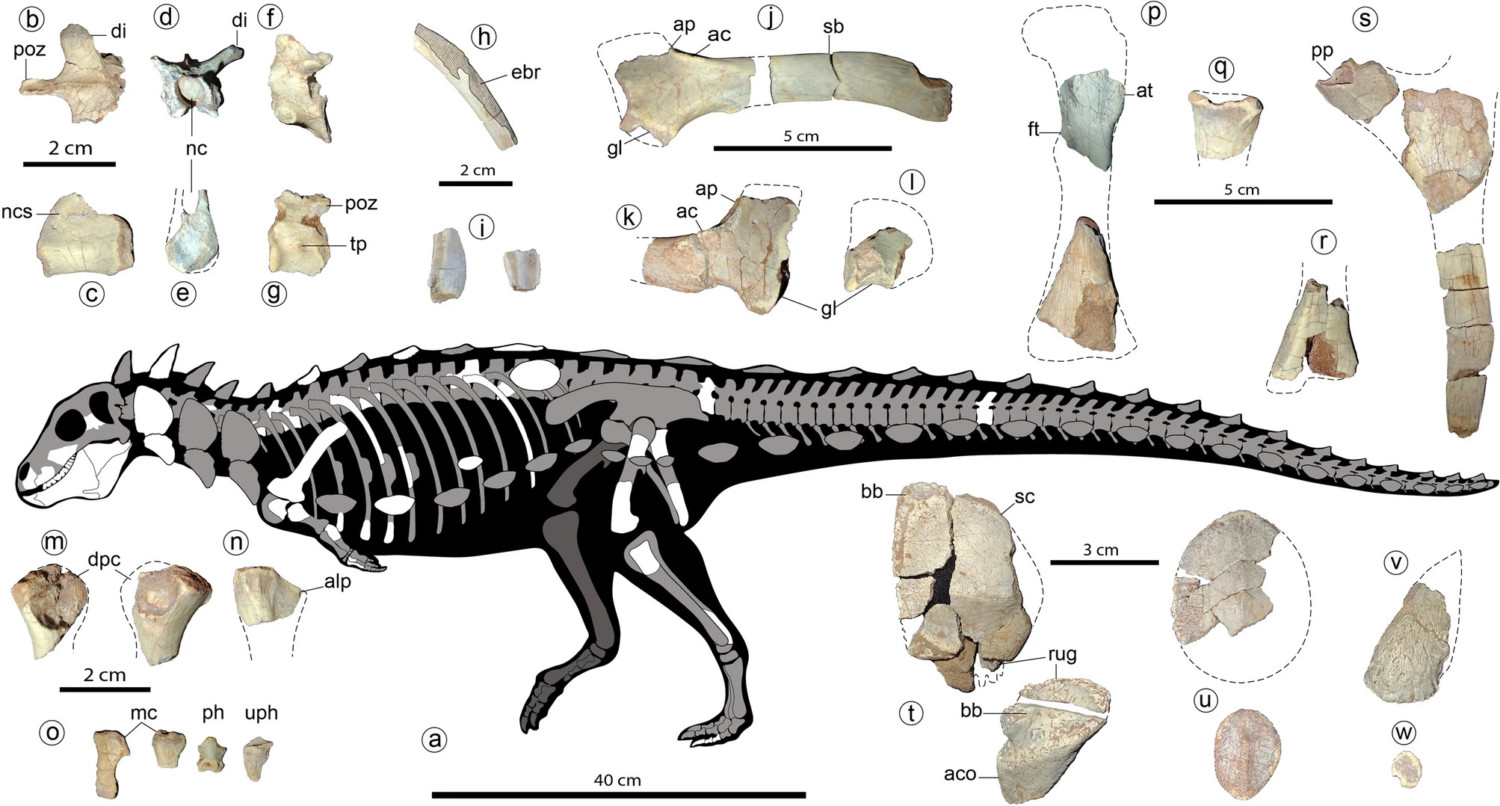Scientists recently announced the discovery of a previously unknown dinosaur in southern Argentina. The small, spiny dinosaur that paleontologists refer to as Jakapil kaniukura likely lived between 97 and 94 million years ago, according to Science Alert. Based on that timeline, this would put the dinosaur in the Cretaceous period, which is the last known time dinosaurs lived on the planet.
In conjunction with the scientific team who unearthed the fossils in the Patagonian region of Argentina, paleontology student and artist Gabriel Díaz Yantén created a computer animation of what Jakapil kaniukura might have looked like in its heyday.
“Here is the first thyreophoran from Argentinian Patagonia,” the artist shared on the @PaleoGDY Twitter account. (“Thyreophoran” refers to a group of dinosaurs with body armor.) “Such an honour [to] work with Sebastian Apesteguia, Facundo Riguetti, and Mauricio Álvarez to achieve this reconstruction.”
• Jakapil kaniukura •
here is the first thyreophoran from Argentinian Patagonia
Such an honour work with Sebastian Apesteguia, Facundo Riguetti and Mauricio Álvarez to achieve this reconstruction.#blender #blendercommunity #paleoart #paleontology #Jakapil #Argentina pic.twitter.com/Hf4ZphlWsH— PaleoGDY (@PaleoGDY) August 11, 2022
In its research abstract introducing the new dinosaur species, published in the journal Scientific Reports at Nature.com, the scientific team described Jakapil kaniukura as a close relative to the Ankylosaurus and the Stegosaurus (also part of the Thyreophora group), both known for their armor-plated exterior. Unlike its massive armored relatives, though, Jakapil kaniukura was much smaller: only about 5 feet in length and between 9 to 15 pounds in weight. This means Jakapil kaniukura would have been about the size of a modern house cat.
Based on their fossil findings, scientists said they believe Jakapil kaniukura was an herbivore that walked on two legs.

The significance of this new dinosaur discovery is not simply in finding a brand-new species, which is always exciting. Evidence of the Jakapil kaniukura gives scientists new evidence of varying sizes of Thyreophora group, as well as insight into its geographic and biological timeline. This discovery marks the first time scientists uncovered fossils of a thyreophoran in the southern hemisphere.

“Jakapil also shows that early thyreophorans had a much broader geographic distribution than previously thought,” according to the researchers. It is a member of an ancient basal thyreophoran lineage that survived until the Late Cretaceous in South America.”
This story originally appeared on Simplemost. Checkout Simplemost for additional stories.


